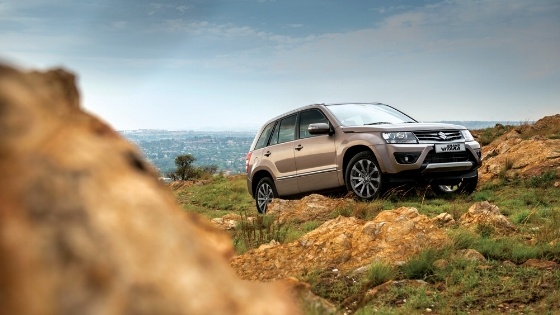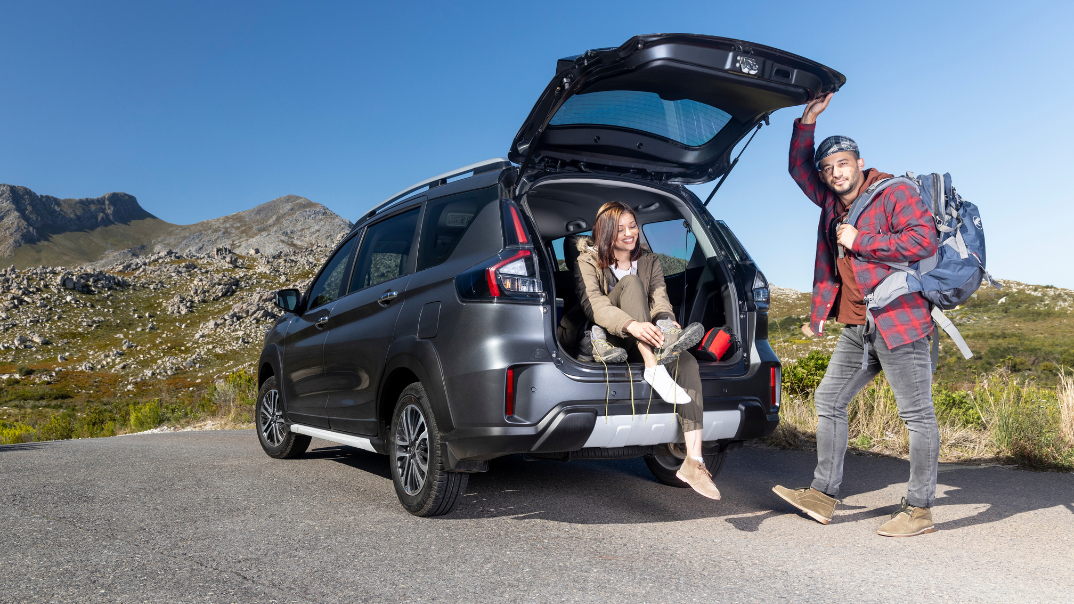-1.png?width=1074&name=Untitled%20design%20(8)-1.png)
Before you take your 4x4 off-roading, heed these driving tips to ensure a safe and exciting adventure!
Today's 4X4s are amazing machines. Not only are they built to comfortably take you wherever you want to go in style, but they are just as adept at fording streams, clambering up and over mountains, carving a path through the thickest of jungles, and tackling sand dunes without even raising a sweat.
And, really, what's the point of owning a 4x4 if you're not going to push it to its limits, at least occasionally?
But simply driving off the beaten path isn't as simple as it sounds. It's an adventure that can be challenging and confusing, especially if you're not prepared. But you don’t have to worry - we’ve amassed a number of tips and techniques to help you trailblaze into the wilderness with no fear.
Choose the right 4-wheeler
First of all, the type of off-road adventure you can have depends on your four-wheel (4WD) drive vehicle. You'll want a 4x4 with a chassis frame that's built to withstand the punishment of off-road obstacles.
The new, third-generation Grand Vitara is a pure Sport Utility Vehicle (SUV) born and bred to free the spirit and open paths where none existed before. Under the product concept of “off-road athlete”, the Grand Vitara was rigorously engineered to excel in a wide range of demanding situations.
Pre-trip inspection: Things to check before you set off on your adventure
Prior to getting behind the wheel, you need to check for the following things to ensure your adventure will be safe one:
- Check your tyres (including the spare) to ensure they are in good condition and inflated properly.
- Look under your vehicle for any leaks or mechanical problems.
- Ensure all your fluids are topped off.
- Check the condition of your steering and brakes. All repairs should be carried out before leaving home.
- Keep track of maintenance on filters, belts and hoses.
Safety precautions:
- Pack all appropriate "emergency" supplies.
- Be aware of changing weather conditions before you go.
- Travel with at least one passenger, and at least one other vehicle whenever possible. Let someone know where you are going, and set a time to contact them to let them know you are okay.
- Pay attention to how you load your vehicle. Loads should be distributed evenly within the vehicle if possible. Loads behind the rear axle will sag the rear of the vehicle, limiting your departure angle and clearance.
- If you have a roof rack fitted, be aware of weights and how they are distributed. Excessive loads will change the centre-of-gravity, thus making the vehicle less stable. Also, remember the additional height of your vehicle due to the rack.
Off we go!
Now that you’re ready and fully-kitted for your off-roading adventure, here are a few guidelines to follow during your drive:
- Drive slowly.
- Just as on the road, stay right to avoid oncoming traffic. If common sense tells you it's safer to move left instead of right, then do so. If there is only room for one vehicle to pass, the rule is the more manoeuvrable vehicle, or the more experienced driver, should yield the right-of-way.
- When two vehicles meet on an incline and there isn't a safe place to pull over, the vehicle travelling uphill has the right of way. It is safer for the vehicle travelling downhill to reverse.
- Keep the driver's side of the vehicle close to obstacles so you can judge distances more accurately - just don't forget about the rest of the vehicle!
- When riding through deep ruts, pay attention to the track. Heavily used tracks often become deeply rutted, to the point where it is impossible to drive without getting the undercarriage hung up. To prevent this, drive with one wheel in the rut and the other wheel on the middle hump. If there is enough room on the side, drive with one wheel on the hump, and one on the far side of one of the ruts.
You have an emergency. Now what?
There’s a very high chance that your 4x4 might get stuck or experience a mechanical breakdown. Given that you’ve already packed basic tools and supplies, you should be able to continue with your drive after following these tips.
- If you stall: If your car is about to stall on steep incline or decline, do not depress the clutch. This could cause your 4x4 to "free wheel" and you could lose control very quickly. Instead, first turn off the ignition and apply the foot brake very hard. Then apply the parking brake. After selecting a suitable route back down the hill, slowly depress the clutch, put it in reverse, let the clutch out, and simultaneously release the parking brake and the foot brake slowly. Then start the engine. With an automatic transmission, never shift the gear lever to "park," as this may lock the transmission and you may not be able to release it without the aid of a winch.
- If you get stuck: If you get stuck on a rock, stump or log, survey the situation first to determine the best way to free the vehicle without damaging it. If you're stuck on an object that can be moved, jack up the vehicle and clear away the obstacle. If you're stuck on an object that can't be moved, jack up the vehicle and fill under the tyres so that you can drive over the obstacle. Try letting some of the air out of your tyres - just remember to air them up again as soon as you can.
Remember that lowering tyre pressure also reduces the vehicle's overall height and therefore the vehicle's ground clearance. Lock the differential locks (if fitted), and use as high a gear as possible. After shoveling away the mud, dirt or sand that is blocking the tyres, clear a path in the direction you'll be traveling so the tyres can get enough traction. Carpet strips, wood, floor mats, brush, rocks, clothing, or sleeping bags can be placed as traction aids under the tyres in the direction of travel.
- If you still can't get out: Jack up the vehicle and fill the area under the tires with sand, rocks, logs, brush, packed snow or any combination of these. If the jack sinks into the ground, use a piece of wood as a base. (Never crawl under a vehicle that is supported by a jack!)
- The best way to get unstuck is by using a winch: A winch takes the hard work out of vehicle recovery. It also allows a lone vehicle a means of freeing itself. Another vehicle can be used as an anchor, but natural anchors, such as trees, stumps and rocks, are the handiest.
With its bold new front mask and impressive fenders, the Suzuki Grand Vitara is both dynamic and stylish in its appearance. Tough enough for off-road driving yet elegant enough to grace the concrete jungle, this vehicle is practically an adventure waiting
to be driven – in style.
For more tips and tricks, you can read our blog on 7 driving tips for your 4x4.






















